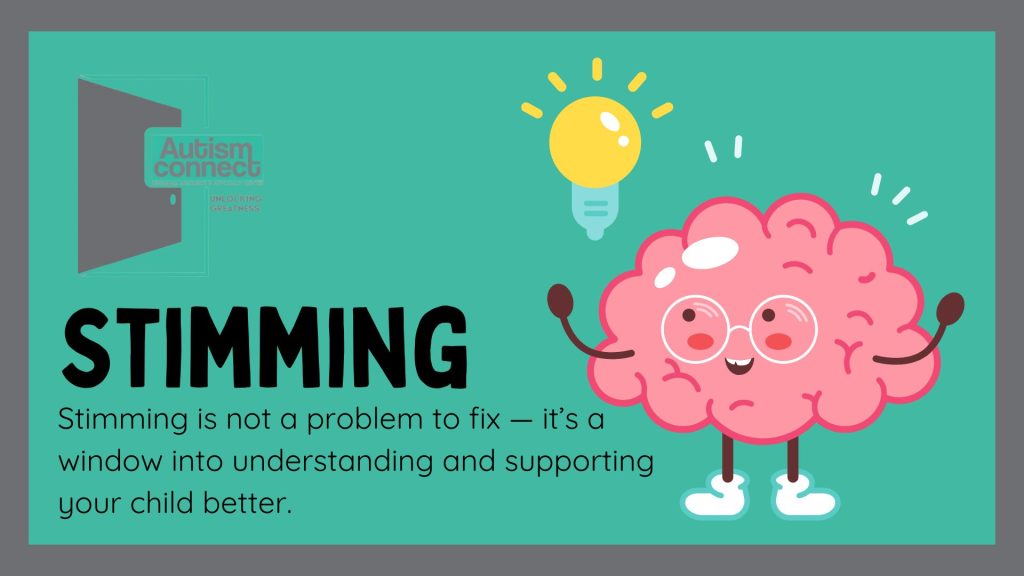Why We Support Stimming at Autism Connect
At Autism Connect, one of our core values is acceptance — seeing each child and young adult for who they are and celebrating the unique ways they experience the world. One of those unique differences is stimming.
Stimming (short for “self-stimulatory behaviour”) can look like hand-flapping, rocking, humming, spinning objects, tapping, or repeating words and sounds. For many autistic individuals, stimming is more than just a behaviour — it’s a tool. It can bring comfort, reduce stress, and help with focus.
Why We Support Stimming
- It’s a form of communication. Stimming can tell us when someone is excited, overwhelmed, or in need of calm.
- It helps with regulation. Just as some people fidget with a pen or bounce their leg when nervous, autistic individuals stim to balance their emotions and energy.
- It’s part of identity. Stimming is not something that needs to be “cured” — it’s part of the way many autistic individuals interact with their world.
By supporting stimming, we’re saying: You are safe to be yourself here.
What if Stimming Becomes a Loop?
Sometimes stimming can get “stuck” — when an individual repeats the action so much that it interferes with daily activities, learning, or social interaction. In these moments, our goal is never to stop the behaviour harshly, but rather to guide gently and redirect.
Here are some strategies we use:
- Offer alternatives – Provide a sensory toy, stress ball, or movement break that channels the same need.
- Change the environment – Reduce noise, lights, or other triggers that may have led to overstimulation.
- Use co-regulation – Stay calm, use reassuring language, and sometimes mirror their rhythm to help guide them back to balance.
- Build a routine – Predictable schedules help reduce anxiety that often fuels repetitive stimming loops.
The Power of Positive Language
At Autism Connect, we make sure our words encourage and uplift. Instead of saying “Stop flapping your hands”, we say “I see you’re excited! Let’s use our hands to try this too.”
By using positive reinforcement, we:
- Validate feelings.
- Build trust.
- Show that regulation can be safe, supportive, and respectful.
A Message to Families
If your child stims, know that it is not something to be ashamed of or afraid of. It is part of who they are. By supporting stimming, we are honouring their needs and helping them feel safe in their bodies. And when stimming becomes overwhelming, we step in with compassion, patience, and strategies that guide rather than control.
At Autism Connect, we want every family to know: Stimming is not a problem to fix — it’s a window into understanding and supporting your child better.

